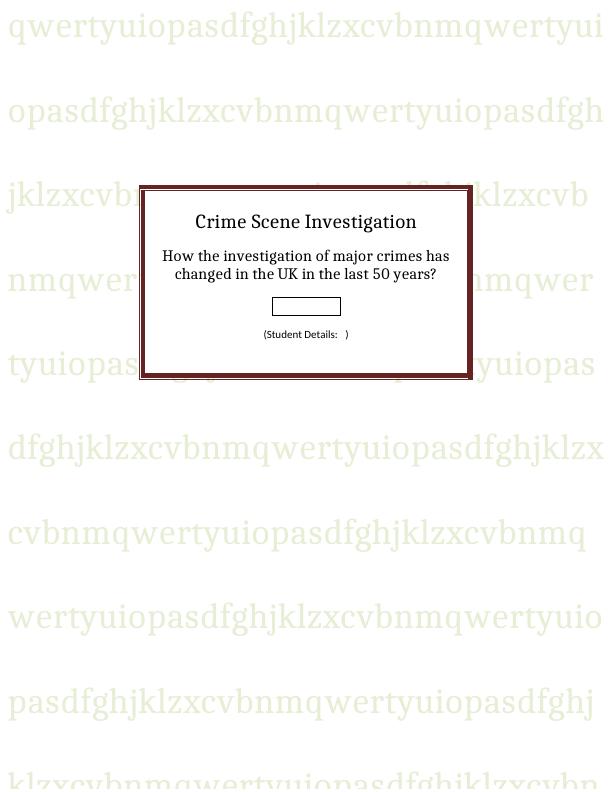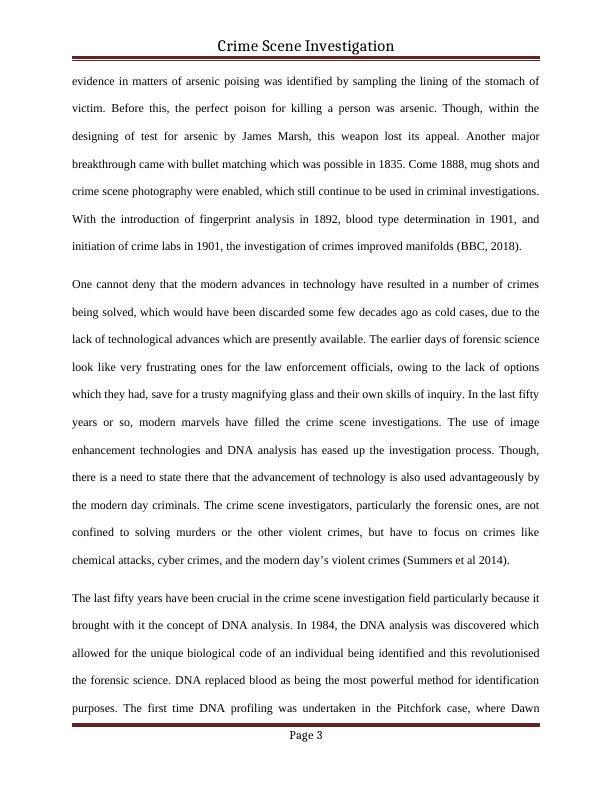Ask a question from expert
Crime Scene Investigation: Changes in UK in the Last 50 Years
9 Pages2483 Words388 Views
Added on 2021-04-21
About This Document
This article explores the changes in crime scene investigation in the UK over the last 50 years. It covers the history of forensic science, advancements in technology, and the use of physical evidence. The article also discusses the significance of DNA analysis and computer reconstructions in solving crimes.
Crime Scene Investigation: Changes in UK in the Last 50 Years
Added on 2021-04-21
BookmarkShareRelated Documents
End of preview
Want to access all the pages? Upload your documents or become a member.
The CSI Effect: How Forensic Crime Television Shows Affect Society
|14
|3319
|245
The CSI Effect Forensic Crime Television Show
|15
|3959
|279
Crime Scene Investigation (CSI)- Paper
|14
|3331
|736
The CSI effect: Forensic Crime Television Assignment
|12
|3136
|234
DNA and the law assessment
|11
|2765
|19
Survey of Forensic Science: Analysis of Two Investigations and the Role of DNA
|5
|632
|429


